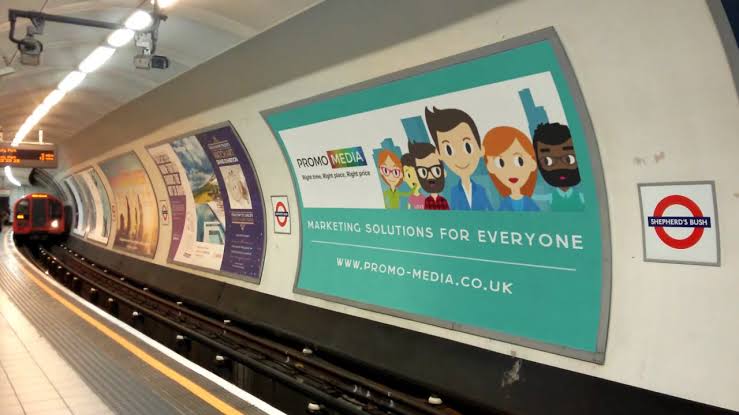Who is the Target Audience of This Poster? Why Behavioral Economics Matters
When marketing professionals design poster ads, one critical question always comes first: Who is the target audience of this poster? But identifying your audience is just the beginning. To truly influence and engage them, marketers must dive deeper, using insights from behavioral economics to enhance the effectiveness of their posters.
Behavioral economics combines psychology and economics to better understand human decision-making. By integrating these insights into poster campaigns, you can design messages that resonate deeply and drive meaningful action.
Who is the Target Audience of This Poster? Leveraging Key Behavioral Principles
Let’s explore some crucial behavioral economics concepts and how they can significantly improve the effectiveness of your poster ads.
The Power of Social Proof in Poster Ads
Social proof—the idea that people follow others’ behaviors—is a powerful tool in advertising. For example, ads in posters often include phrases like “Join thousands of satisfied customers” or showcase testimonials. When viewers perceive that many others are already engaging positively with a product or service, they are more likely to follow suit.
When asking, “Who is the target audience of this poster?”, consider incorporating visuals or messages that highlight popularity or widespread approval to influence your audience subconsciously.
Utilizing Scarcity and Urgency
Scarcity—the perception that a product or opportunity is limited—motivates immediate action. Adding phrases like “Limited Time Offer” or “Only 5 Left!” into a poster ad can drive urgency. For instance, if your poster ad targets shoppers during a seasonal sale, incorporating countdown timers or limited quantity messaging can significantly boost engagement.
To effectively use scarcity, always revisit the fundamental question: Who is the target audience of this poster? This ensures the scarcity approach aligns with their values and urgency triggers.
Anchoring in Poster Advertising
Anchoring is a cognitive bias where consumers rely heavily on the first piece of information they receive. If your poster ad highlights a high initial price, followed by a discounted price, the initial high price serves as an anchor, making the discount seem even more appealing.
For example, poster ads in retail environments can prominently display original prices crossed out next to discounted ones. This makes the discount psychologically compelling. Understanding who is the target audience of this poster? helps decide the most relevant price anchors to use.
Loss Aversion and Poster Ads
People generally prefer avoiding losses to acquiring gains—a principle known as loss aversion. Poster ads that emphasize what people might lose by not taking action are highly effective. Messages like “Don’t miss out!” or “Avoid regret—act now!” leverage this principle effectively.
Consider your audience carefully when employing loss aversion. Ask again, who is the target audience of this poster? and tailor your messaging to reflect what matters most to them.
Real-World Examples of Behavioral Economics in Poster Ads
Let’s explore practical examples of how behavioral economics principles have been successfully applied in real-life poster ad campaigns:
Example 1: Fitness Club Poster Ads
Fitness clubs frequently use scarcity and social proof. A poster ad stating “Join hundreds who achieved their dream body. Limited slots available!” leverages both principles. It creates urgency (scarcity) and reassurance (social proof).
Example 2: Environmental Awareness Posters
Environmental campaigns often use loss aversion effectively. Posters warning about the dangers of climate change with messages like “Act now or lose this forever” accompanied by images of disappearing wildlife can trigger immediate emotional responses.
Example 3: Retail Sale Posters
Anchoring and scarcity are heavily used in retail ads in posters. For example, a poster might state “Original price $100, now only $29—today only!” This anchors customers to the original price and highlights scarcity through the limited-time offer.
Applying Behavioral Economics in Ads in Posters
When designing your next poster campaign, follow these best practices:
Clearly define your audience: Continually ask, who is the target audience of this poster? Understanding their psychological triggers ensures your poster speaks directly to their motivations.
Combine principles strategically: Use social proof alongside scarcity, or anchoring combined with loss aversion for more powerful messaging.
Test and refine: Experiment with different behavioral techniques and measure results to see which resonate most effectively with your target audience.
Conclusion: Turning Behavioral Insights into Powerful Poster Ads
Behavioral economics offers marketers robust tools to craft ads in posters that truly resonate. By continually revisiting the foundational question—Who is the target audience of this poster?—marketers can align their creative strategies with psychological insights to boost engagement, drive action, and achieve impactful results.
Remember, the most successful poster ads are not just visually appealing—they strategically influence decisions by tapping into how audiences actually think and behave.






